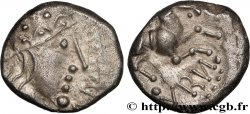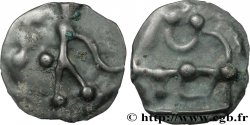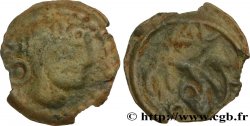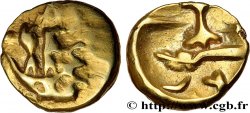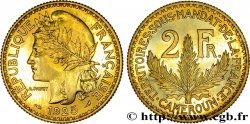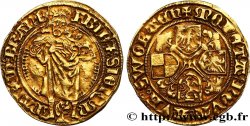v57_0432 - GALLIA - GALLIA DELLO SETTENTRIONALE - ÆDUI (BIBRACTE, Regione dello Mont-Beuvray) Statère en électrum à la lyre et à l’aurige aviforme, type de Chenôves
MONNAIES 57 (2013)
起拍价 : 900.00 €
估价 : 1 800.00 €
竞价记录 : 900.00 €
出价数量 : 1
最高出价 : 1 735.00 €
起拍价 : 900.00 €
估价 : 1 800.00 €
竞价记录 : 900.00 €
出价数量 : 1
最高出价 : 1 735.00 €
种类 Statère en électrum à la lyre et à l’aurige aviforme, type de Chenôves
日期: c. 70-50 AC.
铸币厂名称/城市 Autun (71)
材质 electrum
直径 19 mm
模子方针 5 h.
重量 5,16 g.
稀少度 R2
关于品相的说明
Statère frappé sur un flan épais et régulier, avec une frappe un peu molle et légèrement décentrée au droit, mais particulièrement vigoureuse au revers. Agréable patine avec des reliefs clairs et brillants sur un fond plus sombre dans les champs
正面
正面的文字 ANÉPIGRAPHE.
正面的说明书 Tête humaine laurée à droite, la chevelure stylisée ; grènetis.
背面
背面的文字 ANÉPIGRAPHE.
背面的说明书 Cheval galopant à droite ; au-dessus du cheval, l'aurige ; lyre sous le cheval.
评论
Ces monnaies du type de Chenôves se divisent en trois types ; à la lyre (classe I), à la rouelle (classe II) ou au triskèle (classe III).
Ce statère de la classe I est très intéressant, avec un bel aurige aviforme bien net au-dessus du cheval au revers. Le droit est légèrement décentré, avec l’empreinte du bord du coin assez nette, permettant de restituer la forme du coin et de son empreinte, ronde et régulière.
Ce statère de la classe I est très intéressant, avec un bel aurige aviforme bien net au-dessus du cheval au revers. Le droit est légèrement décentré, avec l’empreinte du bord du coin assez nette, permettant de restituer la forme du coin et de son empreinte, ronde et régulière.








 对产品描述纠错
对产品描述纠错 打印
打印 分享我的选择
分享我的选择 提问
提问 Consign / sell
Consign / sell
 产品介绍
产品介绍